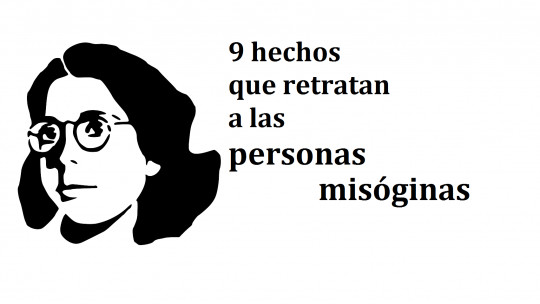
Misogyny has coexisted throughout time and history, understood as hatred or aversion towards women and manifested in different ways. In modern society, although overtly hostile acts towards women are widely condemned, a more subtle and pernicious form of misogyny persists: normalized and everyday misogyny.
This phenomenon refers to behaviors, attitudes and practices that, although they do not seem aggressive at first glance, perpetuate the discrimination and devaluation of women. Normalized misogyny infiltrates numerous aspects of everyday life, from advertising and the media to common language and social expectations. It affects women’s self-esteem, limits their opportunities and contributes to maintaining unequal power structures.
Talking about normalized misogyny is crucial because, by doing so, we can identify and challenge these practices, promoting a cultural change necessary for gender equality. This article will explore concrete examples of normalized misogyny in everyday life, its impact on women, and ways we can combat this problem to move towards a more just and inclusive society.
Historical and cultural context
Misogyny, understood as hatred or aversion towards women, has existed and has continued throughout human history, manifesting itself in various forms in different cultures and times. In Ancient Greece, philosophers such as Aristotle considered women naturally inferior, a thought that permeated various Western societies for centuries.
During the Middle Ages, misogyny intensified due to the domination of the Christian religion, which, through witch hunts, thousands of women were persecuted and executed.
With the arrival of the Enlightenment and human rights movements, the subjugated position of women began to be questioned, but misogyny did not disappear; it simply took on more subtle forms. Instead of overtly hostile and aggressive acts, normalized misogyny manifests itself through behaviors and attitudes that are considered “normal” or “acceptable” in daily life. This includes gender stereotypes, traditional role expectations, and the perpetuation of inequality through cultural institutions and practices.
Explicit misogyny, such as gender violence or overt discrimination, is generally rejected by modern society. However, normalized misogyny is harder to identify and combat because it is deeply rooted in cultural norms and values. For example, seemingly harmless comments that devalue women, stereotypical representation in media, and constant pressure on women to meet certain beauty standards are all forms of normalized misogyny.
Recognizing and understanding this difference is crucial to effectively addressing gender inequality in our society today. The fight against misogyny requires not only confronting openly sexist, sexist and aggressive acts, but also question and transform everyday attitudes and behaviors that perpetuate discrimination and devaluation of women.
Examples in everyday life
Normalized misogyny manifests itself in numerous aspects of everyday life, often in subtle and insidious ways, making it difficult to identify and combat. Below are some clear and concrete examples of how it is expressed in various areas:
1. Advertising and media
The representation of women in advertising and the media is one of the most visible examples of normalized misogyny. Women are often objectified and reduced to objects of desire. Advertisements that unnecessarily sexualize products, movies and series that perpetuate gender stereotypes (such as the woman dependent on men or the “pretty girl” who lacks depth), and the lack of complex and varied female characters are forms of misogyny that have been normalized. . These representations not only reinforce limiting ideas about the role of women in society, but also affect the perception that women have of themselves and its possibilities.
2. Language and microaggressions
Everyday language is full of microaggressions that devalue women. Expressions like “cry like a girl” or “real man” imply that femininity is synonymous with weakness and that masculinity is the standard of strength and courage. These comments, although they may seem harmless, They perpetuate the idea that to be a woman is to be inferior. Furthermore, terms such as “boss” with negative connotations compared to “boss” and the difference in how ambitious women are labeled (“bossy”) in contrast to men (“leaders”) reflect subtle but persistent discrimination.
3. Beauty norms and social expectations
Beauty standards imposed by society put constant pressure on women to meet unrealistic standards. From advertising promoting weight loss products to magazines criticizing the bodies of female celebrities, women are constantly bombarded with messages indicating that their worth is tied to their physical appearance. This obsession with image not only affects women’s self-esteem, but also perpetuates the idea that their main value lies in how they look, relegating other important aspects of their identity and abilities.
4. Behaviors and attitudes in work and educational settings
In the work and educational environment, normalized misogyny manifests itself through subtle discrimination and the devaluation of women’s contributions. Women often face different treatment, such as being interrupted more frequently in meetings, receiving less credit for their ideas, or facing higher expectations to demonstrate their competence. Furthermore, female-dominated professions tend to be less well-paid and less valued than those dominated by men. In education, girls may be discouraged from pursuing careers in STEM (science, technology, engineering and mathematics) fields due to persistent gender stereotypes.
Its impact of normalized misogyny
Normalized misogyny experienced in daily and everyday life has profound consequences on the lives of women, affecting their psychological well-being, employment and educational opportunities, and perpetuating gender inequality in our everyday society.
1. Psychological impact
Psychologically, constant exposure to misogynistic and sexualized attitudes and behaviors can cause low self-esteem, anxiety and depression. The devalued messages and unattainable beauty standards that are perpetuated in the media and advertising contribute to a negative perception of themselves. Microaggressions and derogatory comments, even if subtle, have a cumulative effect against confidence and personal worth.
2. Labor impact
In the workplace, normalized misogyny translates into subtle but persistent barriers to women’s advancement. These include discrimination in hiring, pay inequality, and lack of recognition of their achievements. Women often have to work harder to demonstrate their competence, yet they can be overlooked for promotions and leadership opportunities.
3. Educational impact
In the educational field, as we have already mentioned, girls and young women face gender stereotypes that limit their aspirations and opportunities. The belief that certain fields linked to technical sciences, engineering or mathematics, among others, are a “male territory”, discourages many young women from pursuing these careers. This perpetuates female underrepresentation in these crucial areas for development and innovation.
Ways to combat normalized misogyny
Combating normalized misogyny requires a multifaceted approach that addresses both individual attitudes and institutional structures. In this section, we will discuss some ways to combat normalized misogyny.
1. Education and awareness
Education and awareness are fundamental tools in this fight. Promoting inclusive education from an early age, which teaches respect and gender equality, helps deconstruct entrenched stereotypes and prejudices. Educational programs that include gender studies and the history of women’s rights can raise awareness among new generations about the importance of equality.
2. Policies and institutional changes
Organizations and companies must implement clear policies against discrimination and harassment, and foster an inclusive work environment. This includes providing gender equality training, establishing effective procedures for handling complaints of harassment and discrimination, and ensuring that women have the same development and promotion opportunities as men.
3. Individual and social mobilization
On an individual and collective level, it is vital that people take an active stance against misogyny. This may include confronting and correcting sexist comments, supporting victims of harassment and discrimination, and being allies in promoting gender equality. Social movements and awareness campaigns also play an important role in making the problem visible and pressing for legislative and cultural changes.
Conclusions
Normalized misogyny, present in various aspects of daily life, perpetuates gender inequality and deeply affects women. Recognizing and confronting these behaviors is essential to moving towards a more equitable society. Through education, institutional changes, and individual actions, we can dismantle these biases and build an environment where all people, regardless of gender, are valued and respected.








